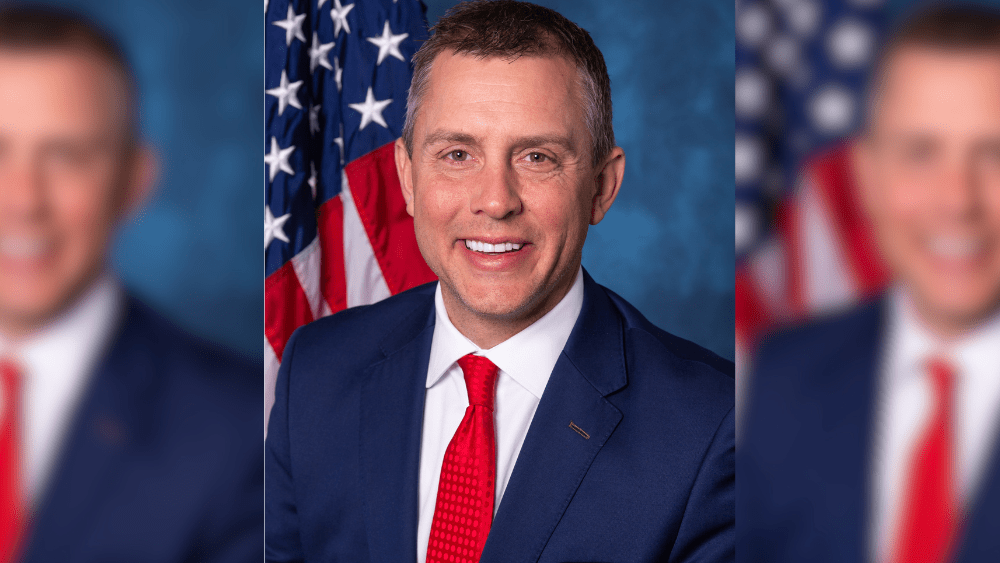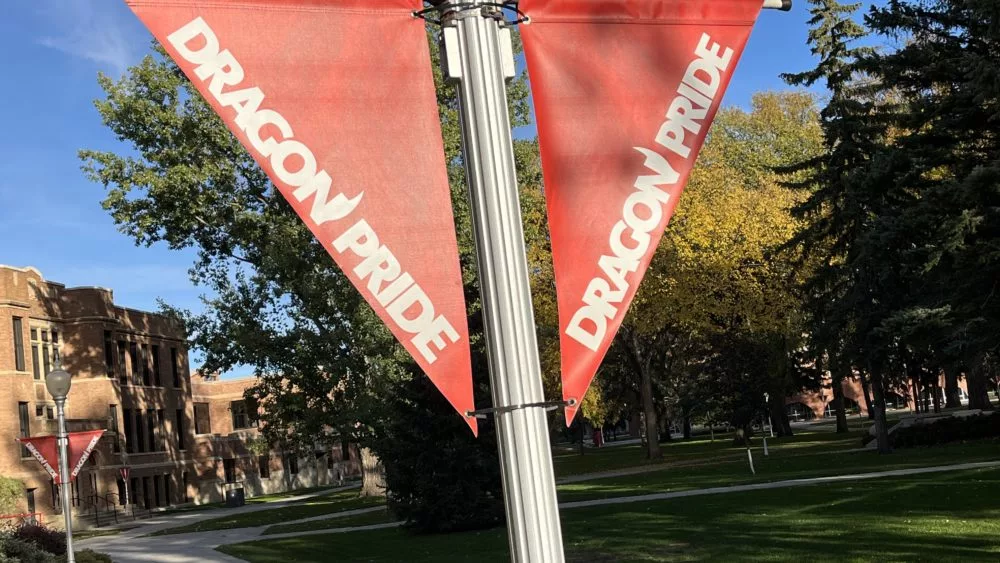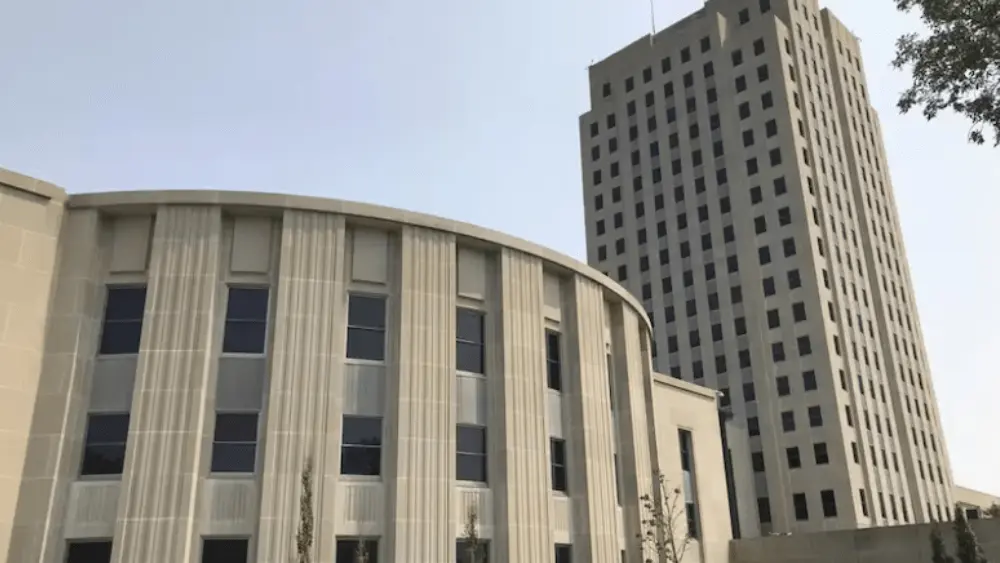BISMARCK, ND — North Dakota Congressman Kelly Armstrong is hoping a new Farm Bill will get passed before he leaves office in January. And while he’s optimistic, Armstrong tells The Farmer that a second extension of the 2023 bill may be the end result.
Both the House and Senate Ag Committees have crafted versions of the bill, but both chambers left Washington for their annual August recess last week with neither full body having voted on them. The current bill expires September 30.
The Farm Bill is one of the most complicated and expensive undertakings that Congress will see in any five-year period. It was last signed by President Trump in 2018, and after delays and disagreements between Democrats and Republicans, a one-year extension was signed by President Joe Biden in mid-November.
The bill supports the ag economy and provides food aid for more than 40 million low-income Americans, but also deals with a myriad of topics ranging from forestry to credit to farm program payments.
The current farm bill is projected to cost approximately $500 billion before the sixth-year extension ends, with the new edition expected to soar past $1 trillion for the first time.
Farm groups across the country say the current bill, now 6 years old, does not reflect the current realities of farming.
In a recent editorial, The American Farm Bureau said, “Six years of tumult – including the highest inflation in 40 years, geopolitical disruptions to markets for the things that farmers sell and the things they buy, and rising expectations for what farmers can and should do for the planet – have left key parts of the 2018 farm bill outdated. The world is undeniably different than when the last farm bill was written.”
House Agriculture Committee Chairman Glenn “GT” Thompson (R-Pennsylvania) tells National Hog Farmer that he is committed to getting the bill to the floor in September when the House returns for three weeks before breaking for the final push to the November election. However, most observers do not expect the House to reach an agreement on the bill in time for a vote during that period.
The extension gives lawmakers until the end of 2024 to pass a new farm bill or another extension. But Armstrong, who is running for North Dakota Governor and will not seek a fourth term, says he’s been working to make sure the procrastination comes to an end.
In an interview with WZFG Radio (AM 1090 / FM 92.7), Armstrong said, “I had a meeting with GT Thompson last week with a group of members. Obviously, we moved it out of committee, and it sounds like they’re at least willing to start having some unofficial negotiations. I still think the farm bill probably gets done in the (last few months of the current session). I don’t think senator Stabenow wants to retire from Congress without getting a farm bill done.”
Senate Agriculture Chair Debbie Stabenow told Politico, recently, that she’d rather continue delaying the farm bill than strike a deal with Republicans to limit climate funding and social programs. Stabenow (D-Michigan), who is retiring at the end of this session, has reportedly told colleagues that her legacy is contingent upon protecting climate funding and food distribution programs.
“I think regardless of what happens in the election, it’s a once in every 5-year bill that’s hugely important,” said Armstrong, “and it doesn’t break down as traditional Democrat versus Republican and conservative versus liberal. So, I think there’s a lot of incentive for everybody to try and clear that deck before the next session of Congress starts.”
The Farm Bill contains programs like the Federal Crop Insurance Program, which is the most powerful tool that crop producers have to protect against losses due to adverse events like natural disasters, weather events, and price fluctuations. It is a legacy federal support program and was established in the 1930’s as part of President Franklin D. Roosevelt’s “New Deal.”
The safety net, says the Farm Bureau, helps farmers “get through the bad years so they can continue producing the food, fuel and fiber that America – and the world – relies on. There are many multi-generational farms and rural communities that have thrived through the years thanks to an occasional assist from USDA.”
Subsidies are an increasingly contentious issue for both parties. Fiscal hawks on the Republican side have repeatedly held that government should not be underwriting private industry, and Democrats with different spending priorities have often tried to re-allocate that money for climate programs and food assistance. Armstrong, however, says these safety nets are in everyone’s best interest.
“We have some people that don’t believe in subsidies, and I always try to explain to those people that if you don’t want a $12 loaf of bread at the gas station then you need crop insurance because it’s a highly regulated market and our farmers would do great in a true, free market but the government policies don’t allow them to have one.”
U.S. Representative John Rose (R-Tennessee) in an editorial to The Tennessean, said, “In their current form, the coverage options are far from meeting the growing needs of our nation’s producers. That’s why this Farm Bill expands the supplemental coverage option of crop insurance to provide up to 90% coverage. Nationally, farmers expect the largest ever recorded year-to-year drop in net farm income this year, which is estimated to decrease by $40 billion from 2023. Given the predicaments, farmers cannot wait any longer for relief. That’s why we must provide an adequate safety net to protect against production and market hardships, which is what we did when we increased reference prices for all covered commodities by 10-20%, which producers have desperately requested for years.”
More than 500 state and national ag groups recently authored a letter to ag committee leaders in the U.S. House and Senate, asking them to expediently work through their philosophical differences, and enact a new farm bill in the current Congress.
Armstrong agrees and says some elected officials may put climate initiatives high on their priority list, but the North Dakota delegation is mostly interested in core issues affecting farmers and ranchers.
“Guys like us want more farm in the farm bill. We want the commodity indexing to be right, we want bank loan rates to move up. I mean they have to move up every 5 years because of inflation, which is turbocharged obviously from this administration’s policy…and then you have different fights about things like ‘Food for Peace’ and all of that.”
According to Congressional Budget Office projections, nutrition assistance will account for nearly 80% of spending in the Farm Bill, at approximately $1.14 trillion. Even so, Armstrong says, the two parties do not appear to be miles apart.
“One of the weird parts about all this is, I think 85% of the amendments offered in committee were bipartisan amendments and yet all the Democrats on the ag committee voted no, which doesn’t make any sense to me so that’s frustrating, but we don’t have enough Republican votes in the House to pass a farm bill.”
According to the American Farm Bureau, one U.S. farm feeds 166 people each year, and by 2050, the global population is expected to grow by 2.2 billion.
Once the ag committees in the House and Senate pass their individual bills, the full House and Senate must ratify them. A committee would then be created to draft a compromise between the two bills for the full House and Senate to vote on before it would go to the President’s desk.
Armstrong says there is a long way to go.
“When we get back after August, we’re going to have to figure out whether we have a real opportunity to get it done or if we are going to pass another short-term extension. That would be unfortunate, but the other answer is the new Farm Bill, with hopefully the right changes is going to look a lot like the old Farm Bill.”





